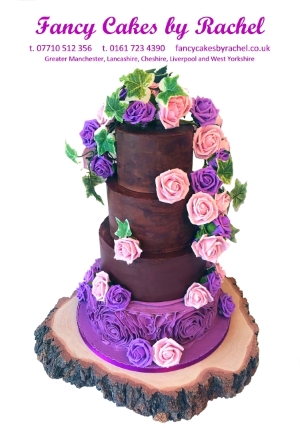Weddings
 Weddings - Part 1
Weddings - Part 1
When planning a wedding there is much to consider and, for those who haven’t planned a wedding before, it can be quite daunting. The words and terminology surrounding a wedding can be a little confusing. In this blog, we will endeavour to simplify some of the words and phrases used by wedding vendors including caterers, photographers, cake makers, musicians, etc.
We have created an A - Z of the most common words and phrases you will hear when planning your wedding. If the wedding professionals, you are working with use a word you are not familiar with just ask them to clarify what they mean.
Altar – The altar is usually a table at the front in a house of worship. However, in wedding terms, the altar is the place where the couple will exchange their wedding vows and is not necessarily in a house of worship or in a religious ceremony.
Applique – When shopping for your wedding dress you may often hear this word. Applique is a piece of fabric or lace that is sewn onto another piece of fabric to give a 3-D effect or texture to the dress.
Black tie – The dress code for the wedding will be expressed on the wedding invitation. If “black tier” is requested, then the attire is formal and men will be expected to wear a tuxedo and women will wear a formal cocktail dress or long evening gown. If the invitation states “black tie optional” this indicates the dress code is slightly less formal and men can wear a suit but a tuxedo is still the preferred option.
Bouquet – The bouquet is carried by the bride as she processes down the aisle. This is a bunch of flowers and can be very extravagant, large and full of exotic flowers, or more simple, perhaps a wildflower posy.
Bridal dresser – the bridal dresser is someone who specialises in working with fabrics. They will attend the bride and bridal party on the morning of the wedding to assist with the clothing. Making any last-minute alterations or repairs or pressing or steaming the clothes so they are perfect when the bridal party emerges for the ceremony.
Buttonholes or Boutonnieres – Are usually worn by the men attending the ceremony. It is a small floral arrangement worn on the left lapel of the jacket.
Bustle – If the bride’s dress has a very long train it may look wonderful during the ceremony but once the ceremony is over it can be a problem walking around with such a long train and this is where the bustle comes in. It is a device, using hoops, ribbons or buttons for hitching up the train to make moving around easier. A European bustle is attached to the underside of the dress fabric, pulling the train under the dress so most of it is hidden. In the USA the bustle is on the outside of the dress near the waist and holds the train in a drape making it an attractive feature.
Cake cutting – After the wedding breakfast the couple will ceremonially cut the cake and remove a small piece to feed to each other. This takes place after the wedding breakfast or at the start of the evening function.
Canape – Before the main wedding meal is served guests are treated to small, tasty bites to stave off hunger while waiting for the meal. They are usually bite-sized and made from puff pastry or crackers with savoury fillings or toppings.
Candles – We all know what a candle is but the candle comes in different forms and each has its own name. The taper candles are tall, thin candles and are usually placed in a candelabra on the tables. Votive candles are small and often referred to as tea lights and usually placed in small glass holders and placed around the tables. Pillar candles are broad candles that don’t need to be put in a holder.
Celebrant – The celebrant will officiate the wedding ceremony and pronounce the couple married.
Charger – A large plate used in place of a placemat. The plated-up meals will be placed on the charger which is larger than the meal plates.
Corsage – The corsage is a small floral arrangement, worn on the wrist by the couple’s mothers and grandmothers.

Bridgemere Close
Radcliffe
Manchester
M26 4FS